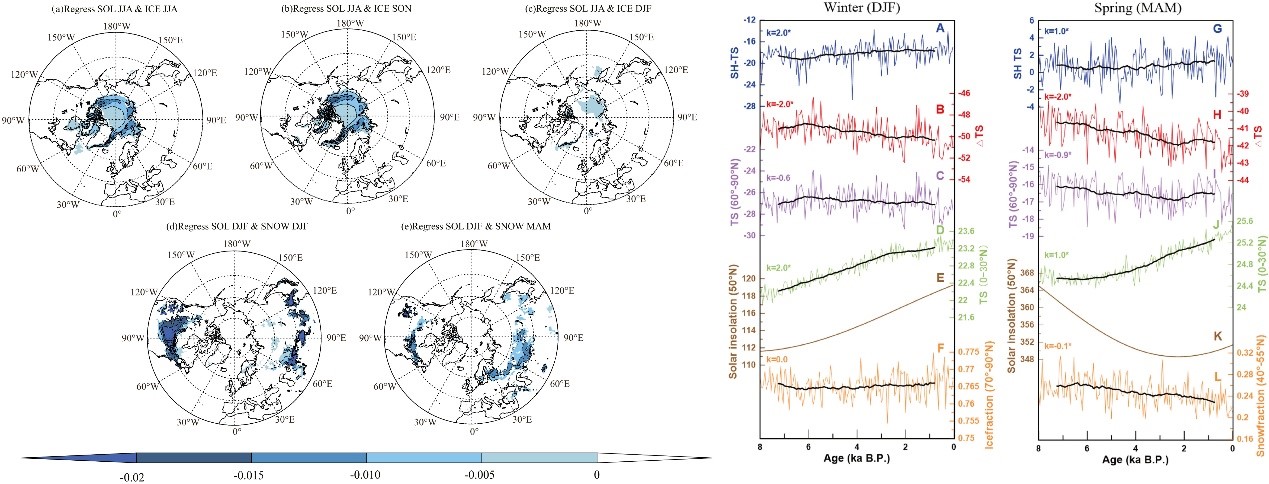Rearchers Strengthened East Asian Winter Monsoon Regulated by Insolation and Arctic Sea Ice Since the Middle Holocene
The East Asian winter monsoon (EAWM) is a crucial climate system in Asia, with significant social and economic impacts. However, our current knowledge about the Holocene EAWM changes and associated mechanisms remains controversial. Recent high-resolution loess grain-size records show that the EAWM has significantly strengthened since the mid-Holocene, but numerous simulations suggest that the EAWM has weakened, giving rise to the "Holocene EAWM conundrum" similar to that of Holocene temperature changes. The discrepancies between these simulations and records also accentuate the complexity of the Holocene climate dynamics.
Recently, a joint research team led by Prof. SHI Zhengguo from the Institute of Earth Environment of the Chinese Academy of Sciences (CAS), along with their collaborators, conducted a high-resolution transient simulation study using the Community Earth System Model (CESM) to investigate climatic changes over the past 8,000 years.
They found the simulated springtime and wintertime EAWM variations, consistent with grain size records of loess, exhibited an obvious strengthening trend since the mid-Holocene (Fig. 1). The Holocene EAWM system in wintertime and springtime is fundamentally governed by meridional temperature gradients between high and low latitudes. In addition to the forcing from northern insolation, the albedo feedback from Arctic sea ice and Eurasian snow cover also modulate the temperature structure (Fig. 2).
Since the mid-Holocene, the weakening of summer insolation in the Northern Hemisphere has enabled an increase in summer Arctic sea ice to persist into the autumn and winter seasons, thereby leading to decreased winter temperatures at high latitudes. The enhanced meridional temperature gradient further strengthens the wintertime EAWM. The primary driver of the strengthened springtime EAWM is attributed to the changes in the meridional temperature gradient induced by insolation and snow cover.
This study underscores the significance of feedback mechanisms in modulating the Holocene EAWM variations, particularly those involving Arctic sea ice and Eurasian snow cover. The degree of Arctic amplification and sea ice cover anomalies should have a significant impact on high-latitude temperature, with the meridional temperature gradient playing a key role in modulating changes in the EAWM. Thus, it is crucial to accurately simulate Arctic sea ice variations in predicting future climate changes.
This work was published in Geophysical Research Letters on Nov. 3.

Fig. 1 Comparisons of East Asian winter monsoon between geological records and simulated results since the mid-Holocene. (Image by ZHOU,et al)

Fig. 2 Regulation of seasonal sea ice and snow cover by orbital insolation has influenced the variations in the East Asian winter monsoon since the mid-Holocene. (Image by ZHOU,et al)
Contact: BAI Jie, Institute of Earth Environment, Chinese Academy of Sciences, Xi'an, China. Email: baijie@ieecas.cn
 © 2015 Institute of Earth Environment,CAS
© 2015 Institute of Earth Environment,CAS Address:No. 97 Yanxiang Road, Xi'an 710061, Shaanxi, China

 Location :
Location :